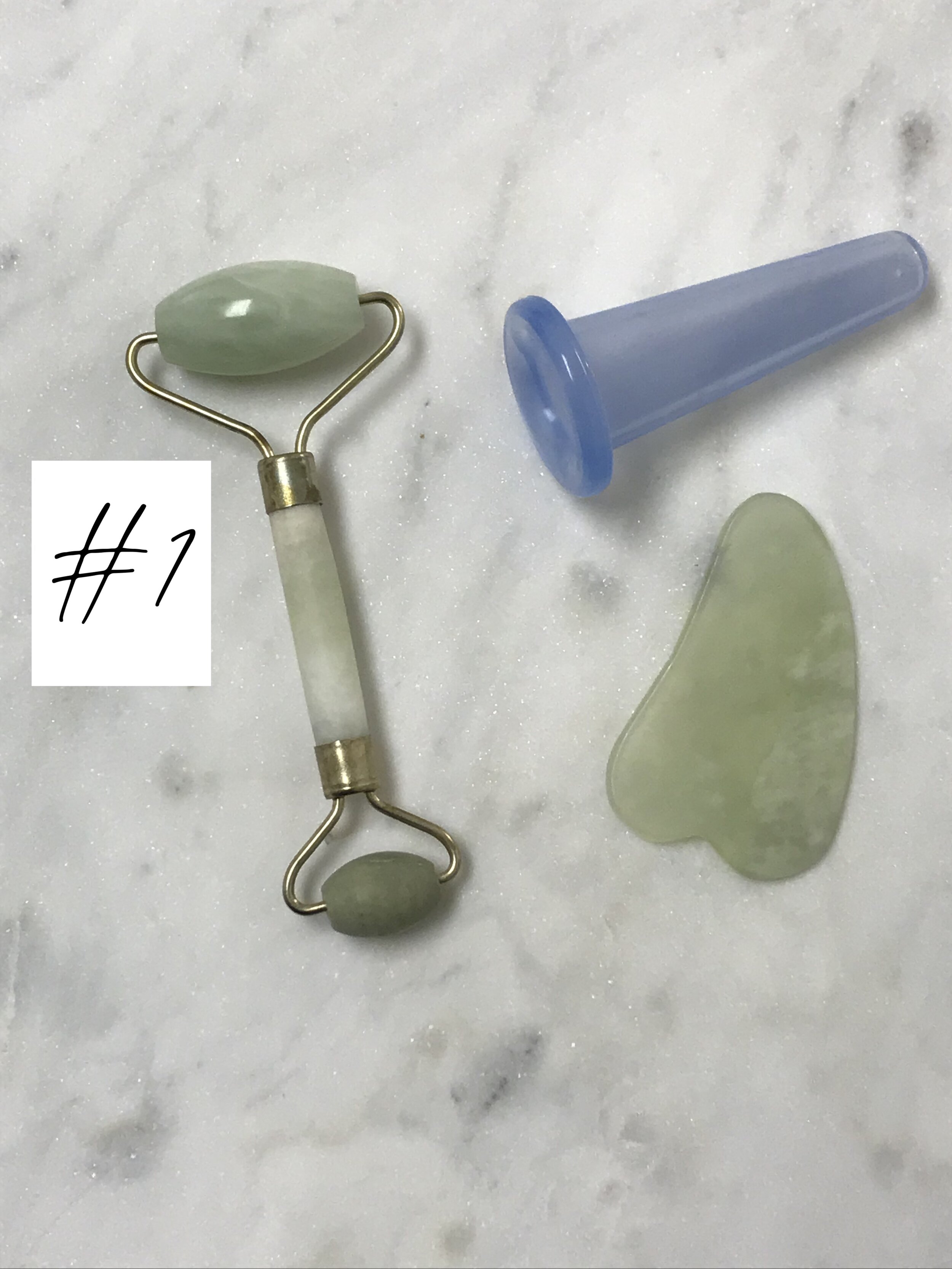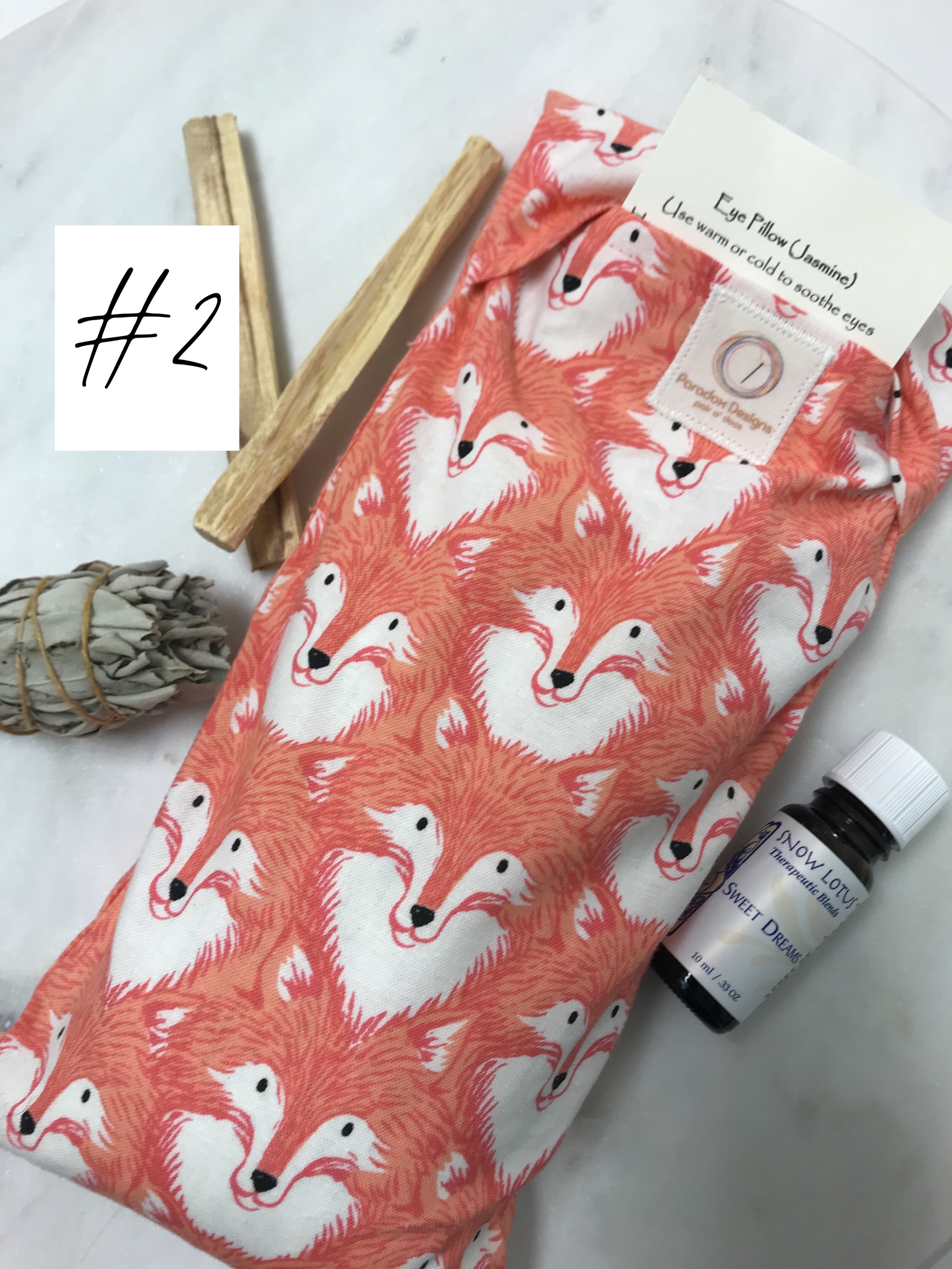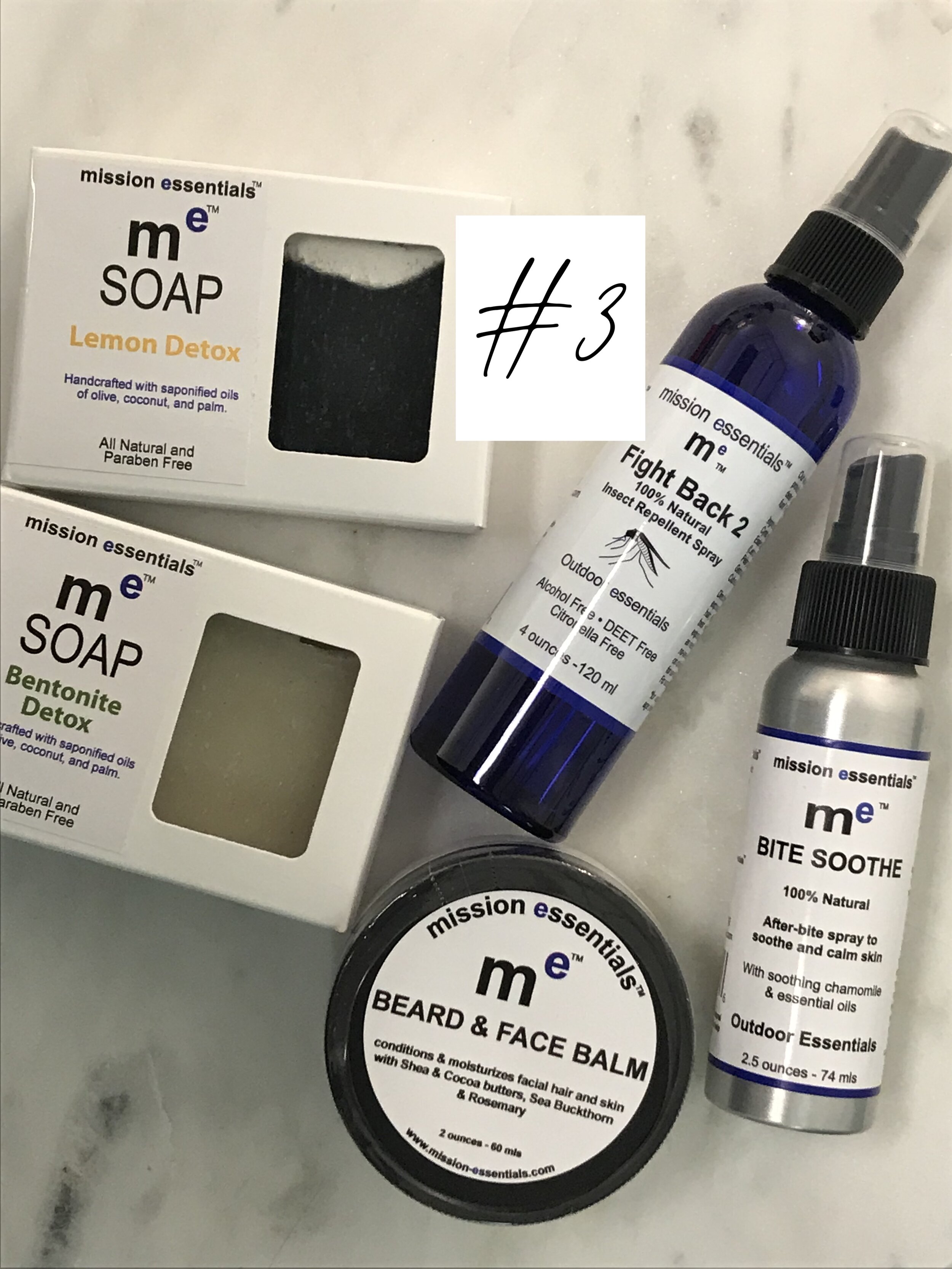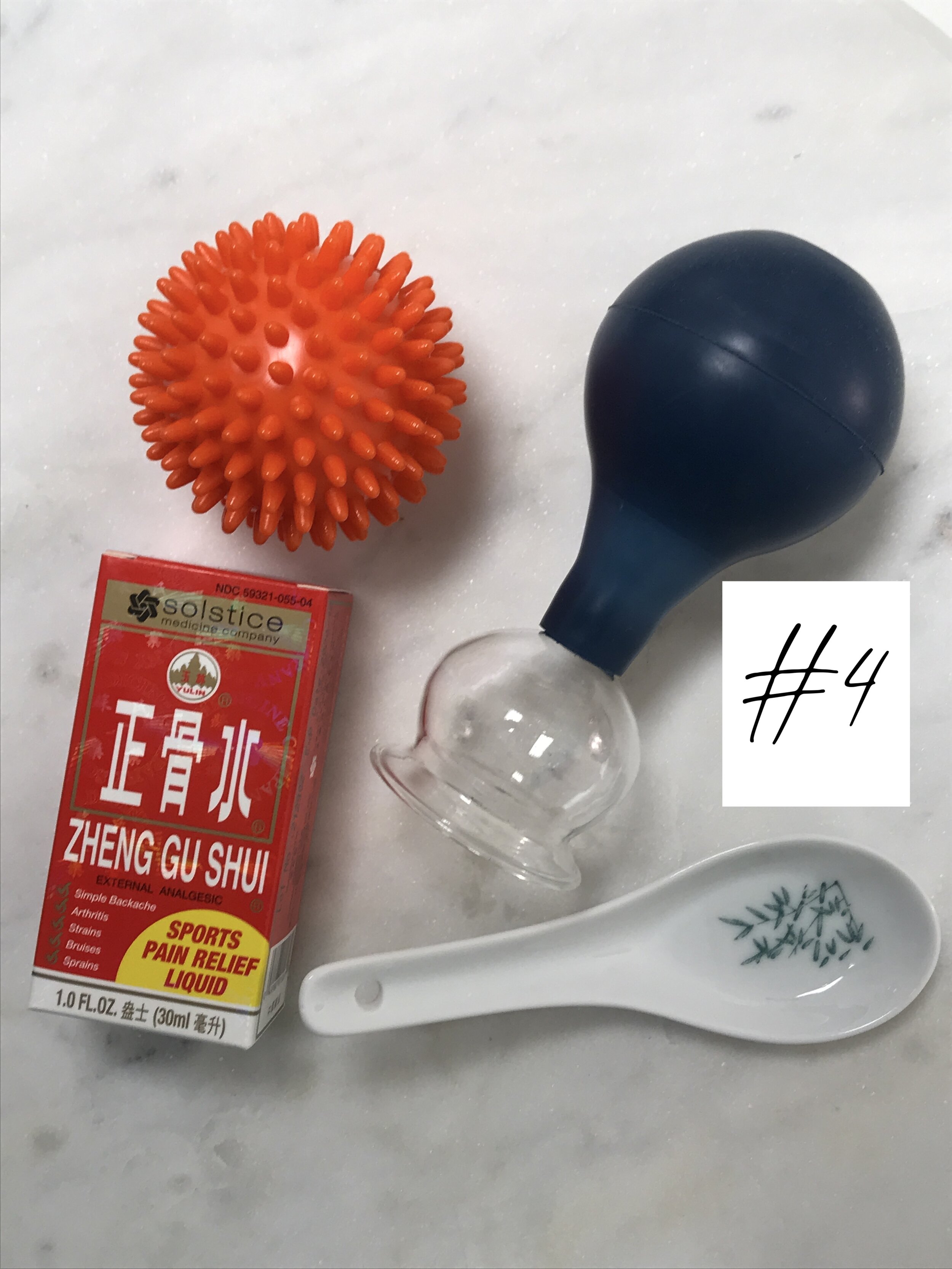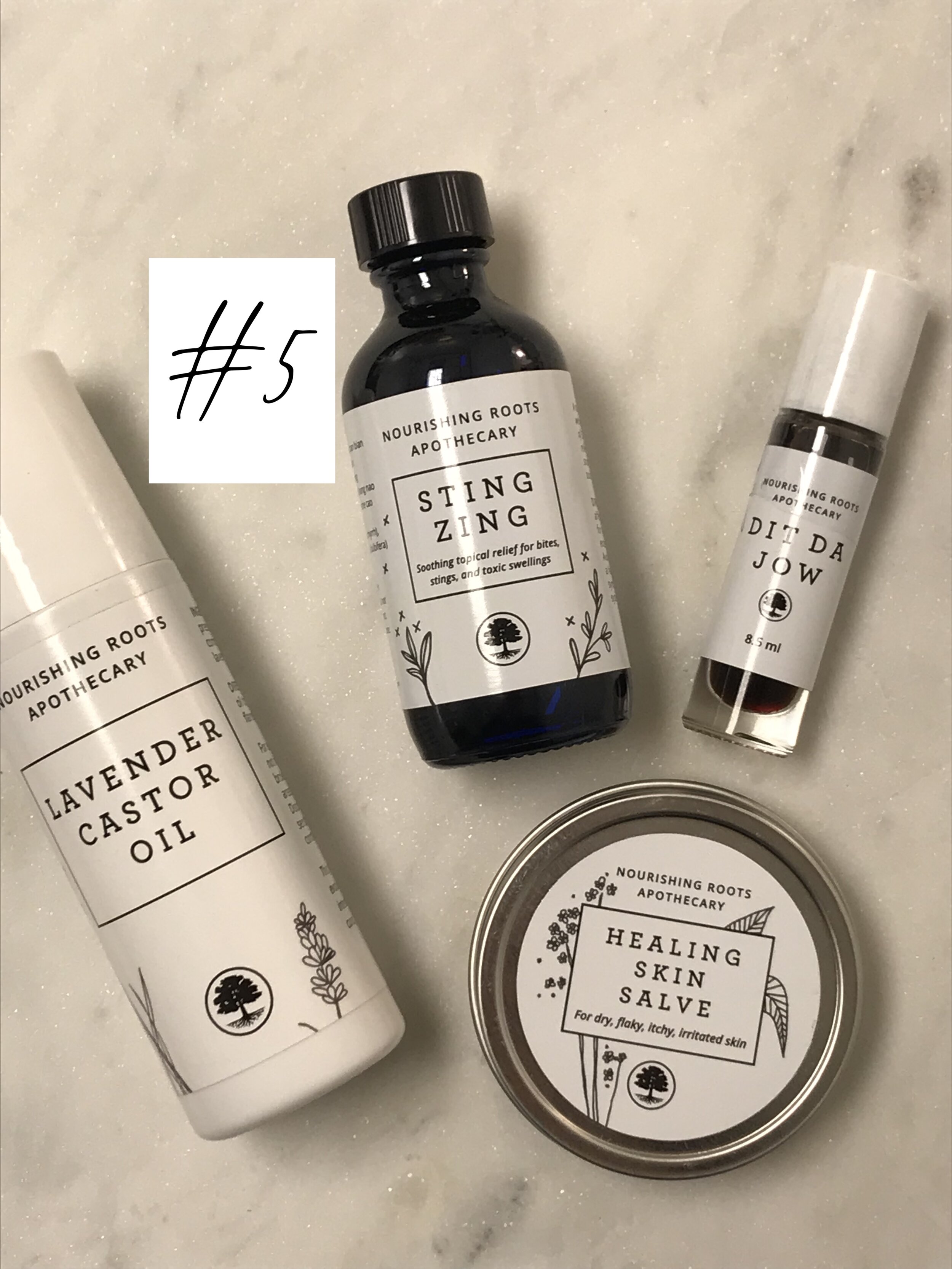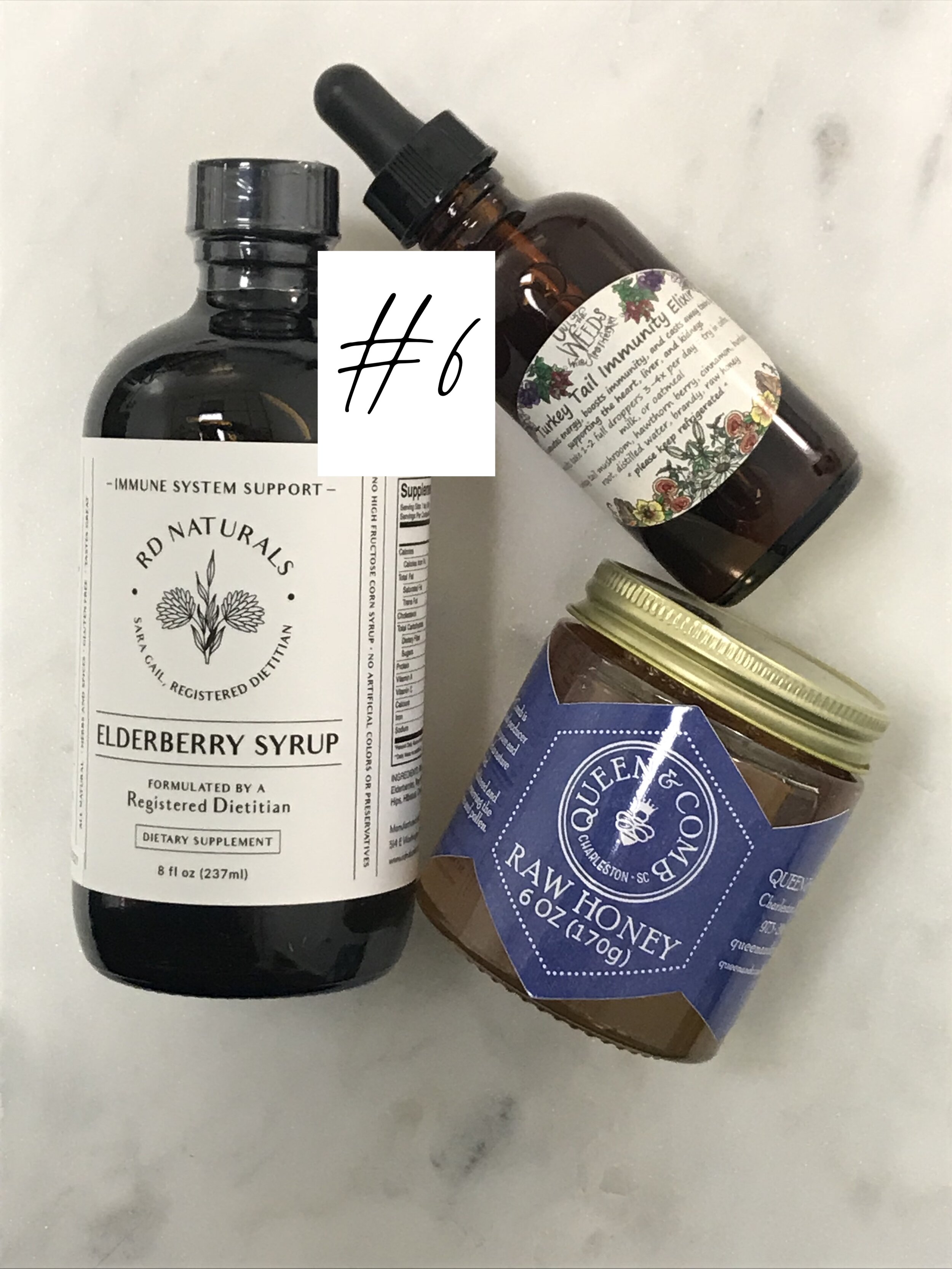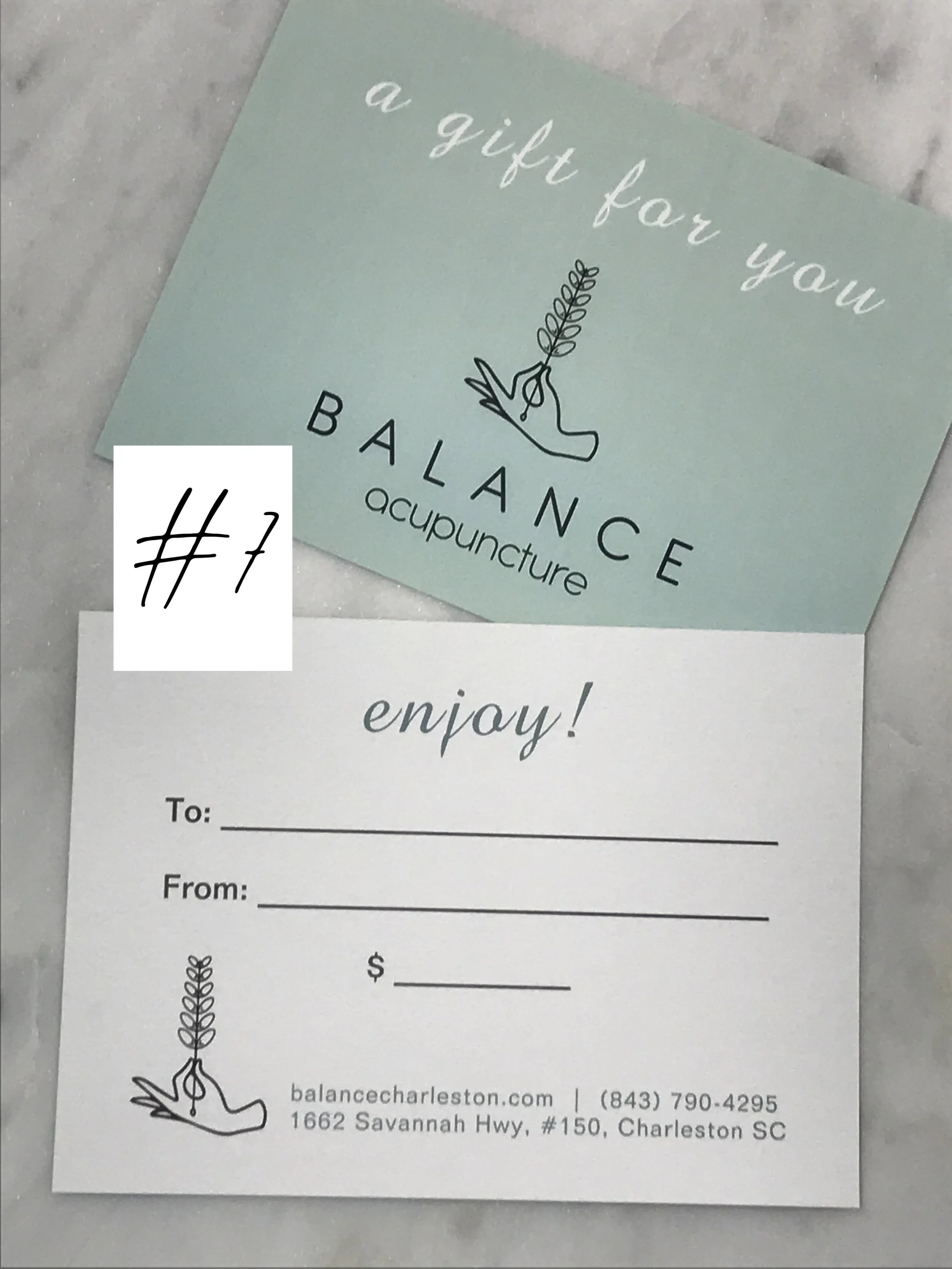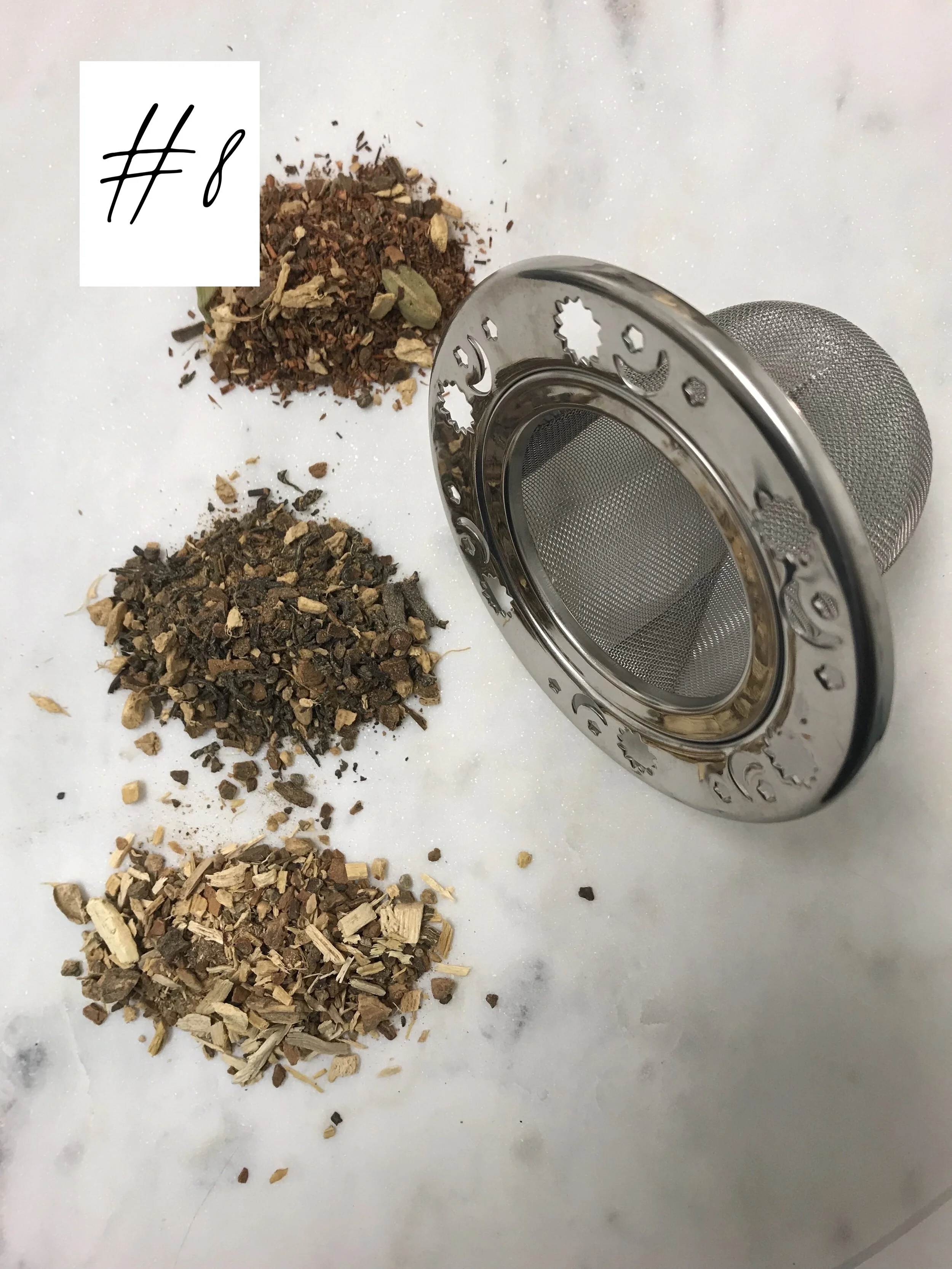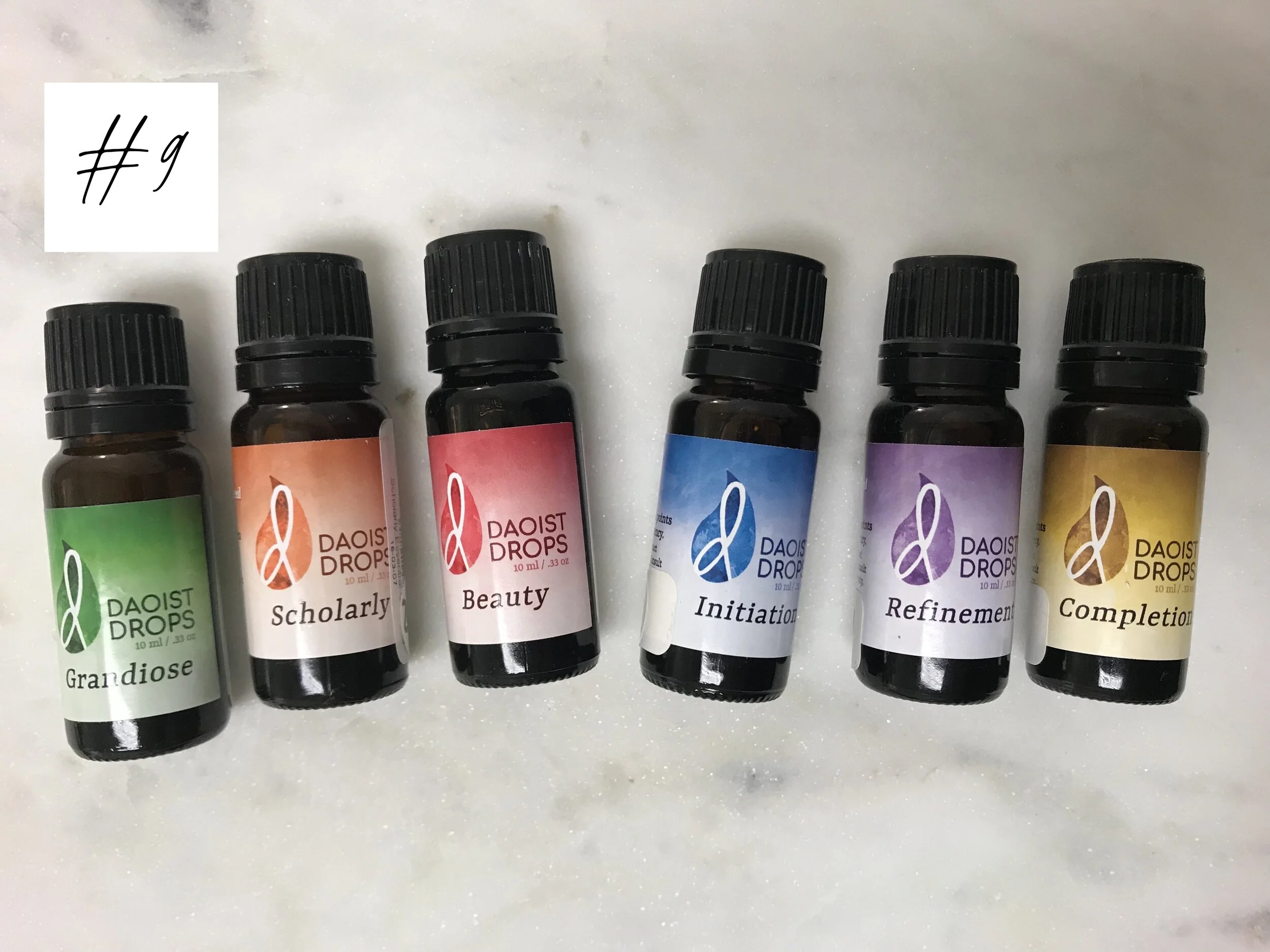Balance Blog: All Things Health, Wellness, and Chinese Medicine
7 Acupressure Points for Stress + Anxiety Relief
The Covid-19 pandemic is a very stressful and challenging time for many of us. In between/ in lieu of your regular acupuncture treatments, try acupressure to take the edge off. A simple acupressure routine can help manage the effects of stress on the body, allowing our immune system to function more optimally.
Acupuncture is well-known for inducing a relaxation response- hence the “acu-nap” many clients take on the treatment table! The insertion of extremely fine needles into the skin at specific acupuncture points releases endorphins, the body’s natural pain-killing chemicals. It also affects the part of the brain that governs serotonin, a brain chemical involved with mood.
This is a very stressful and challenging time for many of us. If acupuncture isn’t accessible to you right now, give acupressure a try! A simple acupressure routine may help to manage some of the effects of stress and anxiety on the body.
Applying pressure to acupuncture points mobilizes energy in the channels and communicates with the nervous system to stimulate the release of those feel-good chemicals. In Chinese Medicine theory, emotions and mental functions are viewed as components of qi (the body’s vital energy) and blood. Correcting the movement of qi and blood in the meridians brings balance back to the mind, body, and spirit.
Most acupuncture points calm the nervous system, but here are a few favorites for reducing stress and easing anxiety: Du 20, Yin Tang, Ren 17, GB-21, Ht-7, Sp-6, and Lr-3.
In Chinese Medicine, all emotions have a special directionality. The “qi” of anxiety and stress is generally concentrated upwards, settling into the mind, shoulders, heart, and chest. Acupressure can help redistribute this energy through the meridians so you can ground again.
To do this, we recommend starting with Du-20, the point at the top of your head, and ending with Lr-3 on the feet for a grounding treatment. You can press the point on each side of the body to feel which one is more tender/sensitive. If you notice a difference, spend more time on the tender side. If you’re still feeling unsettled, press into the bottom of your feet, which your thumb or a tennis ball, to anchor that energy.
When locating points, feel for a tender spot or a place when your finger seems to dip slightly. Most acupuncture points are noticeable once you find them! Spend 30 seconds on each point with firm pressure, while taking nice deep breaths into your abdomen.
Tip: Try using relaxing essential oils like lavender, neroli, clary sage, sandalwood, bergamot, or vetiver to enhance your acupressure session.
(See related posts: “Essential Oils for Stress + Anxiety Relief”)
Acupressure point selection for stress and anxiety relief:
Governing Vessel 20 (Du-20) “Hundred Meetings”
Location: located at the crown of the head. Place a finger at the top of each ear and follow an imaginary line upward- Du-20 is located where your two fingers meet.
Actions: regulates the movement of all yang energy in the body. Pressing on this point can both raise the yang to lift depression and sadness, and, it can ground energy to ease anxiety and overthinking. Du-20 clears the mind to help you feel focused and present. As a “Sea of Marrow” point, Du-20 nourishes the brain and can help treat headaches, dizziness, insomnia, and other neurological conditions.
Yin Tang “Hall of Impression”
Location: located between the eyebrows, in the area known as the third eye
Actions: powerfully calms the spirit and takes the edge off emotional restlessness and anxiety. Connects with the pineal gland to promote deep relaxation and treat insomnia; relieves headaches, foggy thinking, and helps clear nasal congestion or a runny nose. A favorite point to include in any acupuncture treatment for emotional well-being.
Gall Bladder 21 (GB-21) “Shoulder Well”
Location: at the highest point of the shoulder (in the muscle), at the midpoint between the spine and the rotator cuff
Actions: a go-to area for massage, pressing into GB-21 strongly descends energy to release stress and tension held in the upper body, and, can help alleviate anger, migraines, and high blood pressure. Also helpful for those who feel you “carry the burden of the world on your shoulders”. As you press on this point, be sure you maintain steady breaths into your abdomen. Note: Do not use if pregnant.
Conception Vessel 17 (Ren 17) “Chest Center”
Location: At the center of the chest, midway between the nipples.
Actions: beneficial for those who tend to feel the effects of stress and anxiety in their chest, manifesting as shortness of breath, tightness, or palpitations. Relaxes and opens the chest, and releases the diaphragm. Known as the 'influential point of Qi', this is an essential point to regulate the movement of qi, which often becomes stuck with emotional distress.
Heart 7 (Ht-7) “Spirit Gate”
Location: on the inner wrist crease, towards the ulnar (little finger) side. Feel for a hollow at the base of the pisiform bone.
Actions: the “source point” on the heart channel, where the vital energy of the heart organ system gathers. Deeply connects with the heart meridian to nourish the spirit and treat all emotional imbalances, and strengthen heart qi and blood. Quiets the mind and settles worry/anxiety; eases emotional distress with sleep disturbances; releases chest tightness and heart palpitations; strengthens the Fire element- animation, joy, and connection; used in the treatment of emotional shock.
Spleen 6 (Sp-6) “Three Yin Crossing”
Location: on the inside of your leg, just above your ankle. To find this point, (1) locate the highest peak of the ankle then (2) four finger widths up your leg, slightly behind the bone (tibia)
Actions: one of the best points for digestive, gynecological, and urinary issues, as well as emotional and sleep disorders. Named “3 yin crossing” because the liver and kidney meridians pass here- three organ systems that become easily taxed during times of stress. This can feel like exhaustion/fatigue, chronic pain, indigestion, and period problems. Sp-6 builds back blood and yin and moves stagnant energy in these channels. Note: Do not use if pregnant.
Liver 3 (Lr-3) “Great Surge”
Location: located on the foot, between the first and second toes, about an inch away from the web of the toes
Actions: THE point to relieve anger, stress, and irritability. Regulates the flow of qi and blood everywhere in the body to release tension and treat pain. An important point to treat menstrual and digestive conditions worsened by stress, as well as headaches and TMJ. The source point of the Liver meridian system, LR-3 nourishes Liver yin and blood and calms the spirit. Detoxifying and cleansing for the liver.
Acupressure is just one tool in the toolbox to assist with emotional concerns like stress and anxiety. If you’re looking for additional support, consider scheduling a virtual wellness visit with us! There are so many more tools to empower you in your own health, daily.
If you enjoyed this article, check out our NEW comprehensive 22-page ebook, “Better Sleep and Less Stress with Chinese Medicine - A TCM Guide”!
References
Deadman, Peter. A Manual of Acupuncture (2007)
5 Acupressure Points for Immune Support
In between/ in lieu of your regular acupuncture treatments, a great way to stay healthy during “viral” times is with acupressure. Applying pressure to acupuncture points can help stimulate the channels and communicate with the nervous system to build our body’s natural defenses.
Acupuncture excels as a preventive form of medicine: it makes us stronger so that we can avoid disease and it corrects minor imbalances before they become a bigger problem.
If you were to get an acupuncture treatment solely for preventative purposes (aka, a “tune-up”), your acupuncturist would select a group of points that do the following:
boost qi (our vital energy and the foundation of how everything in our body works, including the immune system)
strengthen digestion (that connection between gut health and immunity)
strengthen the lungs (in Chinese Medicine, the lungs are our first line defense against contracting external “wind conditions” like colds, flus, and allergies)
settle the mind (stress can weaken the immune system)
In between/ in lieu of your regular acupuncture treatments, a great way to stay healthy during “viral” times is with acupressure. Applying pressure to acupuncture points can help stimulate the channels and communicate with the nervous system to achieve the above actions.
Some helpful points to stimulate our natural defenses are: GB20, KI27, ST36, LU7, and LI4.
When locating points, feel for a tender spot or a place when your finger seems to dip slightly. Most acupuncture points are noticeable once you find them! Spend 30 seconds on each point. Apply firm pressure while breathing steadily into your abdomen.
Tip: Press the point on each side of the body to feel which one is more tender/sensitive. If you notice a difference, focus your acupressure session on the tender side.
Bonus tip: Acupressure points for immune support pairs well with eucalyptus, pine, tea tree, frankincense, and lavender essential oils
ACUPRESSURE POINT SELECTION FOR IMMUNE SUPPORT:
Gall Bladder 20 (GB-20) “wind pool”
Location: on the back of the head, in the depression between the upper portion of the sternocleidomastoid muscle and the trapezius
Actions: protects the body from exterior pathology (“wind invasions”); releases a headache and a stiff neck; nourishes the brain and benefits the eyes; and, clears the head and calms the spirit.
Kidney 27 (Ki-27) “shu mansion”
Location: on the chest, located about one inch from the midline on the lower border of the collar bone.
Actions: powerful point to reinforce immune system functioning by strengthening the respiratory system; especially good for people prone to upper respiratory infections. Descends qi and opens the chest to relieve congestion, breathing difficulties, asthma, cough, anxiety, and depression.
Stomach 36 (St-36) “Leg Three Mile”
Location: located on the shin, about a hand length below the kneecap, just outside the prominent tibia bone
Actions: one of the most powerful points for boosting immunity. Tonifies whole body qi and blood, and strengthens the protective (wei) qi in particular; builds the body’s energy reserves and relieves fatigue; tones the muscles and aids digestion.
Large Intestine 4 (LI-4) “joining valley”
Location: located on the hand, in the web between the thumb and index finger.
Actions: THE point to release the exterior and treat “wind” conditions— cold and flu symptoms like fever/ chills, runny nose/congestion, headache, sore throat, dizziness, etc.; and, boosts the body’s defenses against recurrence. A powerful anti-inflammatory point; relieves pain and moves qi; has a calming/analgesic effect. NOTE: Avoid this point if you are pregnant.
Lung 7 (Lu-7) “broken sequence”
Location: beginning at the depression in the wrist at the base of the thumb, approximately two finger widths up your arm.
Actions: strengthens the lungs to push out pathology. Traditionally used for early symptoms of a cold/flu like fever/chills and sore throat, but also bolsters the body’s resistance against seasonal bugs and viruses. Treats grief and sadness, which can weaken the lungs.
Acupressure is just one tool in the toolbox to assist with building up your immunity and defenses. If you’re looking for additional support, consider scheduling a virtual wellness visit with us! There are so many more tools to empower you in your own health, daily.
References
Deadman, Peter. A Manual of Acupuncture (2007)
Winter and the Water Element: A Chinese Medical Perspective to Seasonal Wellbeing
Wherever you fall in the transition to the cold winter months, the teachings and practices of Chinese Medicine supports the body, mind and spirit in the midst of change. In preparation for Winter, our focus turns to strengthening the water element’s organ system pair, the Kidneys and Urinary Bladder, and practice that which we observe in nature: stillness and conservation.
Acupuncture helps us live harmoniously with the seasons.
In Chinese Medicine theory, there are five natural elements that exist within us, as they do in nature. Each season belongs to a particular element and has unique correspondences. When we study nature’s patterns and cycles, we can learn how to support our own health and stay well year-round.
WINTER’S ASSOCIATIONS IN CHINESE MEDICINE
ELEMENT: WATER
YIN ORGAN: KIDNEYS
YANG ORGAN: URINARY BLADDER
EMOTION: FEAR
SPIRIT: ZHI (WILLPOWER)
CLIMATE: COLD
COLOR: BLACK/DARK BLUE
TASTE: SALTY
SENSE ORGANS: EARS
TISSUES: BONE
VIRTUES: STRENGTH, COURAGE, WISDOM
Right now, we are in the best season to slow down and conserve our energy. While the lowcountry might not have winter’s snowy and still landscape, the cooler and darker days invite this meditative space to rest and reflect. Whatever your “winter hibernation” might look like (hello, sweatpants and bottomless cups of tea!), it’s essential that you take this time to replenish your resources that have been used throughout the year.
“It is the concentrated, internal force of winter that enables a seed to burst forth in spring growth.”
The energy of winter is deep and potent. With rest, there is work going on, but inside- energy is collected and held in reserve. This deeply nourishing Yin time gives us the needed energy, vision, and purpose with which to emerge into spring- a season of growth, renewal of spirit, and fresh starts.
In this most Yin season, there is an energetic predisposition of retraction as our Qi flows more deeply inside us. There is a depth to the season that invites us to connect with the core of our being and untouched emotions. There is death in nature and less activity to induce stimulation and excitement. For some, the qi of the season can easily contribute to depression, loneliness, and seasonal affective disorder. Others may feel relief for an opportunity to pause and do internal work.
Wherever you fall in the transition to the cold winter months, the teachings and practices of Chinese Medicine supports the body, mind and spirit in the midst of change. In preparation for winter, our focus turns to strengthening the water element’s organ system pair, the Kidneys and Urinary Bladder, and practice that which we observe in nature: stillness and conservation.
The Water Element
Winter is ruled by the water element: the most nourishing and essential substance for life. This element stores much of people’s reserves of energy. That’s why rest is crucial in the winter. This time of year, over-work and lack of sleep easily depletes the water element and the kidneys, especially.
The wisdom of water is to flow. Water moves effortlessly and takes the exact form of whatever contains it. A balanced water element is able to move smoothly through the season with strength, courage, and willpower. There’s a sense of flow and ease, and an alignment to one’s purpose or destiny.
There is depth, darkness, and mystery to water. The emotion associated with the water element is fear. In appropriate amounts, fear is essential to survival because it enables us to navigate situations with care and caution. When the water element is out of balance, one might experience excess fear, phobias, and lack of courage.
The Kidneys + Urinary Bladder
The kidney and urinary bladder are the organ systems that belong to the water element. Likewise, both play an important role in fluid regulation. There are acupuncture points along their meridians that can be used to fill the reserves and tap into that place where our real strength, courage, and wisdom reside.
In Chinese Medicine theory, the kidneys are the storehouse of our vital energy and our Jing, or Essence. Jing relates to our genetics and governs growth, reproduction, and how we move through the cycles of life. Our bones, joints, teeth, ears, brain, and marrow are influenced by the kidneys.
The kidneys (called the Storehouse of the Vital Essence) ignite all processes and functions within the entire body, mind, and spirit. They provide the driving qi- energy and will power- needed to overcome obstacles and press forward to accomplish our goals in life and live out our fullest potential. We draw upon the energy reserves of the kidneys just by the virtue of living, working, and aging.
The kidney acupuncture meridian begins at the bottom of the foot and travels up the inside of the leg to the pelvis, low abdomen, and ends at the chest. Our body will let us know when we are exhausting these reserves because symptoms along the channel will arise, such as low back ache, weak knees, frequent urination, and menstrual or fertility issues. Other signs of imbalance include: exhaustion, autoimmune flare ups, very low motivation, excessive fear and anxiety, and skeletal disorders.
The urinary bladder is compared to a reservoir where the waters of the body collect. Its acupuncture meridian is the longest of the body: beginning at the eyes, the channel travels over the head to the back of the neck, down the sides of the spine to the sacrum, to the backs of the knees, down the calves, to the ankles, ending at the outside of the little toe. Physical signs of imbalance include back pain, bladder pain, vertigo and headaches, vision issues, and urinary incontinence. Due to this organs’ role of “holding on” to urine, emotional signs of imbalance relate to this “holding on”: grudges and jealousy, in addition to fear.
Winter is an opportunity to focus on the health and spirit of the kidneys and urinary bladder, restore their resources and better manage our reserves. Slowing down, getting plenty of rest, eating well and in-season (more on winter-time foods below), drinking lots of fluids, and adapting a restorative wellness routine will support these organ systems and boost their vitality.
Seasonal Self-Care
The classic texts of Chinese Medicine urge us to follow the cycle of the seasons in order to stay healthy. The Huang Di Nei Jing ("The Inner Classic of the Yellow Emperor"), contains some of the oldest teachings about winter and its relationship to the Kidneys:
“During the Winter months all things in nature wither, hide, return home, and enter a resting period, just as lakes and rives freeze and snow falls. This is a time when yin dominates yang. Therefore one should refrain from overusing the yang energy. Retire early and get up with the sunrise, which is later in Winter. Desires and mental activity should be kept quiet and subdued, as if keeping a happy secret. Stay warm, avoid the cold, and keep the skin covered. Avoid sweating. The theory of the Winter season is one of conservation and storage. Without such practice the result will be injury to the Kidney energy. This will cause weakness, shrinking of muscles, and coldness; then the body loses its ability to open and move about in the Spring.”
Maintaining an appropriate balance between activity and rest is crucial to the health of the water element. In addition to the advice from the classic texts, here are some self-care tips to follow for the winter months ahead:
~ Food therapy: focus on foods that share the qualities of the water element. Colors are dark, taste is salty, content is hydrating and nourishing. Examples include: nuts, seeds, legumes, shellfish, salt water fish, seaweed, dark colored berries, root vegetables, whole grains, stews and soups. We are also including mostly warm and cooked foods, and limiting cold and raw foods. Use warming spices like garlic, ginger, and cardamom.
~ Adaptogenic herbs strengthen the kidneys and adrenals, boost immunity, lift depression, ease anxiety, and help the body adapt to stress. Holy basil, ashwaghanda, astragalus, oat straw, and rhodiola are herbs that can be taken daily as supplements or tea. It’s best to consult with a health care practitioner before adding supplements to your wellness regimen. (Recommended reading for adaptogenic recipes: “Beauty Water: Everyday Hydration Recipes for Wellness and Self Care” by Tori Holmes- available in our shop).
~ Essential oils like geranium, ylang ylang, jasmine, and basil can be used in a diffuser to strengthen the water element. The floral oils are mostly middle or base notes, resonating with the deeper layers of our selves. Floral oils nourish yin, lifts the spirit, and connects with our inner beauty and essence. Basil is used in blends for fatigue, depression, focus, and memory.
~ Winter is time for internal work. Schedule more time to discover yourself through reflection. Meditation, yoga, journaling, dreamwork, and breathwork are great winter activities.
~ We become naturally inclined to seek out things that bring us light and joy this time of year, like holiday parties, dinner with friends, and outdoor winter adventures. Keep your gatherings simple and relaxed. The season calls for making deeper connections with those close to you, but without overextending yourself. A mindful balance of Fire (yang, activity, joy) and Water (yin, stillness, introspection) can be helpful to our psyche and wellbeing!
~ Take care of the kidney and urinary bladder acupuncture meridians. Important acupuncture points along these channels are at the feet, knees, low back, and neck. These points are used to strengthen kidney and urinary bladder function, support immunity, and treat emotional imbalances of the water element. Keeping these areas warm and covered will maintain the integrity of the channels and keep you well physically, emotionally, and spiritually.
Sources:
Hicks, Angela. “Five Element Constitutional Acupuncture”. (2004).
Swanberg, Sarah (L.Ac.). “A Patient’s Guide to Acupuncture: Everything You Need to Know”.
Hello, 2020! 9 Ways To Use Acupuncture in the New Year
Take charge of your health and wellbeing, and learn how you can use acupuncture in the New Year!
Acupuncture can help you feel your best as you kick off the New Year! Here’s how:
Winter encourages us to be Yin: to be still, to rest, and to conserve our resources and energy. When you have a job, a family, school, and New Years resolutions to hit the gym hard, it can be tough to find that Yin moment. Too much activity during a time of year that calls for slowing down can tax the Kidney energy and Qi. Acupuncture allows for the time and space for relaxation and restoration.
Acupuncture eases seasonal transitions and boosts your immunity, energy, and general well-being. Simply said, acupuncture helps us live harmoniously with the seasons. When we study nature’s patterns and cycles, we can learn how to support our own health and stay well year-round. As the seasons change, there is an opportunity to assess the state of your health and sync your mind, body, and spirit to the energy of the new season. Signs that your body needs some support with the change of seasons includes allergies, low immunity, low energy, and seasonal affective disorder. If you are to schedule just a few acupuncture treatments a year, changes in season would be an opportune time to come see us!
Acupuncture is empowering and helps you to take charge of your health! As a holistic medicine, acupuncture sees everything as interconnected: your mind, body and spirit are all linked through a web-like network called the meridian system. So, one kink in the network can affect the body in a number of ways. Chinese Medicine teaches us how everything is connected, and this builds and awareness for what our body needs to be healthy. Needling points along the meridians is a catalyst for positive change and reminds the body of its own ability to heal.
Did you set that resolution to drop a pants size or four? While acupuncture is not a magical one-time weight loss pill, it does offer a safe and natural way to increase metabolism and curb cravings. By regulating the bowels, strengthening the digestive fire, moving Qi and resolving damp accumulation, acupuncture can help you drop some pounds when coupled with a healthy diet and exercise.
Often, people seek out acupuncture treatments when they are already sick. This year, consider using acupuncture as preventative care and get your immune system in high gear to protect yourself from seasonal bugs. Increasing the body’s Defensive Qi, or the body’s first line defense, will not only help prevent illness but also encourage a quick recovery if you do get sick. Suffer from Spring allergies? You can find relief from your runny nose and itchy eyes by strengthening your immune system and addressing the underlying imbalance that is causing your symptoms before allergy season begins.
Will this be the year you quit smoking? Acupuncture can be very helpful for people who want to stop addictive behaviors and cravings. Used in a variety of clinical settings, The National Acupuncture and Detoxification Association (NADA) Protocol was developed to help people recover from substance abuse and alleviate withdrawal symptoms. In a NADA treatment, 5 designated acupuncture points in the ear are needled: Lung, Kidney, Liver, Shen Men, and Sympathetic. These points promote organ recovery, balance the nervous system, and treat stress and anxiety.
When all is said and done, the holiday celebrating can leave some of us feeling a little less merry and bright! Understandably so, detoxes and cleanses are popular in the early weeks of January. Acupuncture supports the organ systems (i.e., the Liver, Kidneys, Lungs, and Large Intestines) that are responsible for cleansing the body of toxins that accumulate due to diet, lifestyle, and environmental pollutants. Some cleanses can be quite extreme and depleting. With the added benefit of being healing and strengthening, acupuncture becomes an excellent ally to any detox regimen.
Chronic pain is commonly aggravated by cold weather. Cold constricts the blood vessels and impedes circulation, and this leads to pain. Chronic pain sufferers may also experience poor sleep, poor energy, and an overall lower quality of life. Winter can be especially aggravating to pain conditions. With herbs, acupuncture, massage, and moxabustion, Chinese Medicine offers a variety of methods to help increase circulation, warm the channels, and stop pain. Consider acupuncture treatments if you hope to have your pain under control in time for those Spring marathons you signed up for!
Lastly, we find that many of our patients begin to think about fertility and family planning when the new year rolls around. In Chinese Medicine, the Kidneys rule the reproductive system and play a big role in conception and development. Winter is an especially great time to “warm the womb” and focus on building Kidney Qi and the necessary resources for a fertile environment.
Healthy Holiday Gift Ideas 2019
Looking for a bit of holiday gift inspiration? We put together some gift ideas for your friends and loved ones. These presents are small enough to be stocking stuffers and big on health and wellness!
Looking for a bit of holiday gift inspiration?
We put together some gift ideas for your family and loved ones. These presents are small enough to be stocking stuffers and big on health and wellness!
#1 - For the beauty queen! Facial rejuvenation tools like jade rollers, gua sha stones, and small silicone cups are perfect DIY additions to a facial routine.
#2 - Ahhh, the gift of rest and relaxation! Eye pillows and aromatherapy are the r+r perfect pair.
#3 - A bundle of all-natural bath and body products made locally by Mission Essentials. A little something for everyone!
#4 - A few fun items for your sporty friend! Gua sha spoons, pump cups, and a Pilates spiky ball help release tightness and improve mobility. Plus, a Chinese herbal pain liniment to treat sore, achey muscles.
#5 - An array of Chinese herbal wellness products made in Asheville by Nourishing Roots Apothecary. We are currently loving the healing skin salve for dry, winter skin!
#6 - The immune boost pack! Included are three of our go-to products for staying well: locally-made elderberry syrup from RD Naturals, local and raw honey from Queen and Comb, and the Turkey Tail Immunity Blend made locally by Out of the Weeds.
#7 - Give the gift of health and wellness! We offer e-cards and gift cards.
#8 - For the tea lover! Choose from three chai tea blends (classic black tea chai, decaf rooibos chai, and herbal root chai)- or try them all! A tea strainer is necessary for these loose-leaf blends.
#9 - Lastly, something special for the alchemist: essential oils for daily rituals. The Daoist Drops essential oil line is created by acupuncturists out of Asheville. Use these essential oil blends as companions for empowerment, healing, and creating change in the body.
All products listed are available for purchase in our shop!
Trying Facial Rejuvenation
Facial rejuvenation is designed to help the whole body look and feel younger. When we encounter a lot of stress or experience emotional times in our lives, it can often show on our face. The treatment is based on the principles of Chinese Medicine and involves the insertion of needles into not only the face, neck, head and ears; but also, the body.
by Andrea Geiger, L.Ac.
(Andrea received advanced training in cosmetic acupuncture from Virginia Doran, M.S., L.Ac. and Dr. Guangying Zhou L.Ac. She additionally earned a Diploma in Dermatology through the Avicenna Center in England.)
Slow down the aging process in a natural way, without injections.
I first tried facial rejuvenation acupuncture about four years ago in Portland, Oregon. Even as an acupuncturist, I was skeptical that a treatment could lift my cheeks, fade fine lines, increase brightness and reduce hormonal acne. I was going to turn 40 and felt the full weight of the number (in truth…more in my head than on my face). At the time, I was slightly obsessed with my cheekbones, as they seemed to sag a bit more year after year. If I could find a safe, cost-effective way to give them a lift, I was all-in. Especially, if it could help me happily embrace my age.
I went to my first facial rejuvenation acupuncture session. Afterwards, I was truly amazed by the results, which lasted for weeks. My checks were lifted and the fine lines around my eyes evaporated. I just glowed. Literally, glowed for over a week. Forty, please…. I felt more like 33. My expectations were met on the first treatment. This usually does not happen with patients, as it can take up to 5-6 treatments to see results. I was impressed and curious.
I began my study of facial rejuvenation acupuncture with local teachers in the Portland area. As I wanted to expand my knowledge, I decided to study with the originator of the technique out of New York, Virginia Doran, L.Ac. In November, I attended an amazing weekend training and became certified in facial rejuvenation techniques. I am extremely excited to share this process with other woman in Charleston, who may be looking for a more natural way to address the aging process.
how it works
Facial rejuvenation is designed to help the whole body look and feel younger. When we encounter a lot of stress or experience emotional times in our lives, it can often show on our face. The treatment is based on the principles of Chinese Medicine and involves the insertion of needles into not only the face, neck, head and ears; but also, the body. Acupuncture points are chosen and inserted in a specific order, to increase an individual’s overall health, which in turn helps the skin to glow and appear younger. The ideal series length is 10-12 treatments. And, the treatment series can hold five years or more, with a maintenance treatment every four months.
facial rejuvenation is for anyone who...
wants to slow the aging process
Is interested in an alternative to injections
wants to reduce the impact of stress and emotion on their face.
has acne or rosacea
what results can I expect?
Increased muscle tone, lifting sagging cheeks and jawlines
Elimination of puffiness
Reduction of fine lines, crow’s-feet, laugh lines, the “11” lines between the eyebrows
Sculpting of the face, bring definition to your features
Increased moisture, blood circulation and tighten the pores
Reduction of bags under the eyes
Lifted eyelids
If you are curious about facial rejuvenation acupuncture and want to learn more or setup an appointment, please contact us. I'd like to introduce you to the process and see how it can help you look younger and just glow!
Andrea is accepting NEW clients for facial rejuvenation beginning in January 2020.
Easy-To-Pack Wellness Essentials for Holiday Travel
Packing wellness travel essentials can be a real lifesaver when you're on the road for the holidays. Bring along these easy-to-pack items to make your day better and your trip easier. And, get a few tips on pre- and post-holiday travel care!
Packing wellness travel essentials can be a real lifesaver when you're on the road for the holidays. And preparing your body for the stress and excitement of holiday travels with the right supplements and care beforehand is just as essential!
We put together a Holiday Travel Checklist that includes pre-holiday care tips and essential wellness items to have on hand during your travels.
Bring along these easy-to-pack items to make your day better and your trip easier:
What about post-holiday travel care?
Continue taking your multivitamins, probiotics, and immune system supplements for at least 2 weeks after traveling. If you feel like you overindulged on holiday food and fun, you can include a gentle daily detox herbal tea into your regimen, like green tea, milk thistle, nettles, or dandelion root. Lemon in room temperature water will also do the trick, as will green drinks with chlorella. Fennel, taken as a tea, supplement, or in food, offers a gentle digestive detox.
Safe travels + take care!
'Tis the season of fall... and it finally feels like it!
Fall is the season of slowing down, contracting inward and beginning to store. It is the time to reserve our energy, to organize, set limits and heed boundaries. The endless energetic days of summer are over, we feel a call to refocus and shift inward. We also see this shift reflected in nature. Days are starting to shorten, leaves are turning, and crisp early mornings are becoming more frequent. As we adjust, so does nature.
by Andrea Geiger, L.Ac.
Fall is the season of slowing down, contracting inward and beginning to store. It is the time to reserve our energy, to organize, set limits and heed boundaries. The endless energetic days of summer are over, we feel a call to refocus and shift inward. We also see this shift reflected in nature. Days are starting to shorten, leaves are turning, and crisp early mornings are becoming more frequent. As we adjust, so does nature.
Season of Dryness
It is also the season of dryness. In Chinese Medicine, the Fall is associated with the element of Metal. This element possesses the quality of healthy dryness, balancing the dampness of the Earth element. However, when the Metal element becomes out of balance, it has a tendency to move towards the extreme of its nature...you begin to feel dry. This can adversely affect each person individually, but some of the symptoms include dry cough, constipation, dandruff, dry skin and flare-ups of eczema, or a lack of moisture to your eyes, nose and mucous membranes.
The Body's Organs
Metal is also the organs of the lung and large intestine. These organs rule our ability to release and eliminate in a healthy way. Fall is the time to purify the body by letting go of anything that does not serve us. These organs also play a vital role in a strong immune system. In Chinese medicine, the lung circulates the "defensive qi" that protects the body from pathogenic invasions.
How to Maintain Balance
It is important to stay in balance with the dryness of the Metal element and support the lungs and large intestine organs during this season. Some helpful tips for Fall:
Stay hydrated - it is important to combat the dryness by drinking plenty of water (no ice!). Enjoy a warm cup of water with lemon and honey every morning to start your day off right.
Put on a scarf - you can catch a cold or flu through the back of your neck, as in Chinese medicine it is said that wind or cold can invade your body. Sounds like an old wives tale! But, I find covering up your neck with a scarf can make a big difference in maintaining your health.
Get out in nature and breathe - open up those lungs and drink in the fresh air! Take a walk and relish in the change of the seasons.
Eat warm foods - time to cook and incorporate seasonal vegetables as well as pungent food and spices like ginger, garlic, onions, horseradish, cinnamon, cloves, cardamom, and turmeric. Don't forget your bone broths!
Use essential oils - there are many options out there to boost your immunity throughout the Fall season. Pick your favorite single oil or blend (Frankincense, Tea Tree, Vitality, Thieves, On Guard, etc.) and use daily.
Regular acupuncture treatments - Acupuncture is an important avenue to stay healthy through the change of the seasons. It can help our body transition with more ease! And, don't forget at the first sign of a cold or flu...please come in for acupuncture!
How To Turn Your Teatime Into A Soothing Daily Ritual
Tea ceremonies have been performed for centuries in cultures all around the world. They are quiet celebrations rooted in mindfulness, respect, and living in the moment—and they can take as little as 10 minutes. How can you get started with your own ritual?
(written by Lauren Becker, L.Ac., as published on mindbodygreen.com)
Tea ceremonies have been performed for centuries in cultures all around the world. They are quiet celebrations rooted in mindfulness, respect, and living in the moment—and they can take as little as 10 minutes. How can you get started with your own ritual?
I always recommend using loose-leaf tea for rituals, as it is usually fresher and more aromatic than bagged tea. Traditional Japanese tea ceremonies used matcha green tea, but you can use your favorite type of brew or experiment with new varieties.
The entire course of a tea ritual—from preparation to clean up—should be done in a mindful way. Forget about "a watched pot never boils" and give yourself completely to the entire process of making and drinking your tea. I suggest you watch the pot until the water begins to bubble or complete a seated meditation while it's warming. Anything that keeps you present.
To get started, add about one cup of boiled water to one heaping tablespoon of tea. Notice the aroma of the steam rising up and how it makes you feel. Steep the leaves for about one minute. Drink your tea with mindfulness and savor each minute. If tension or anxiety arises, let it wash away with a sip of tea and some nice deep breaths.
Celebrate this moment you took for yourself; appreciate this opportunity to step away from your busy day to slow down and recharge. Having a tea ritual at home is a wonderful way to take a pause, be present, reduce stress, and enjoy all the health benefits of drinking tea. Here are some of my favorite teas to mindfully enjoy.
Chai
Chai spices include warming and aromatic herbs like ginger, cinnamon, cardamom, clove, and anise. Along with improving digestion, chai tea boosts the immune system, enhances circulation, and fights inflammation. Black tea is high in antioxidants and promotes mental clarity. In Chinese Medicine, chai spices warm the kidney yang—the root of our vital energy. Try: The Republic of Tea, Republic Red Chai
Hawthorn
This fruity, slightly sour plant has been used for centuries as a heart tonic. Hawthorn can boost the circulatory system, improve heart function, and lower high cholesterol and blood pressure. This heart-centric herb also calms anxiety and soothes jittery nerves. Try: Grateful Heart Tea by Mountain Rose Herbs
Holy Basil/Tulsi
Holy basil is one of the most sacred herbs of India and is regularly used for common ailments in Ayurvedic medicine. This adaptogenic herb encourages physical and mental well-being, helps the mind and body cope with disease, and offers significant protection against stress. Try: Organic India Tea, Tulsi
Jasmine Green Tea
The intoxicating, floral scent of jasmine flowers has a relaxing effect on the body and calms down the autonomic nervous system. While jasmine embodies grounding and euphoric qualities, green tea promotes alertness and mental awareness. Its high antioxidant content protects the body from environmental toxins and free radicals and supports cardiovascular health. Try: Rishi Tea Jasmine Green
Lemon Balm
Touted as an herb for longevity, lemon balm promotes good health by easing anxiety and lifting the mood. Lemon balm encourages restful sleep, eases appetite, calms a nervous stomach, and balances blood sugar levels. Excellent for brain health, the herb can also improve alertness. Try: Traditional Medicinals Herbal Tea, Organic Lemon Balm
Motherwort
Best known as a fertility herb, motherwort is often used to support women's emotional and physical well-being. Used to treat anxiety and stress, motherwort is said to spread joy and calm throughout the body and is a cardiovascular and nervous system tonic. (Note: This herb should not be used during pregnancy.) Try: Wise Woman Tea by Mountain Rose Herbs
Rose
Sipping on rose petal tea opens the heart and promotes a sense of liberation, peace, and beauty. In Chinese Medicine, rose is used to release constraint and promote the free flow of energy (Qi) in the body. Rose has antidepressant and anti-inflammatory properties and is used as a nervous system tonic. High in vitamin C and antioxidants, rose tea repairs cellular damage and protects the body from serious illnesses. Try: Dawn Chorus Tea by Mountain Rose Herbs
Cheers!
9 Self-Care Tips for Fall
The teachings and practices of Chinese Medicine supports the body, mind and spirit in the midst of change. In preparation for Fall, our focus turns to strengthening the metal element’s organ system pair, the Lungs and Large Intestine, and practice that which we observe in nature: letting go.
Acupuncture helps us live harmoniously with the seasons.
In Chinese Medicine theory, there are five natural elements that exist within us, as they do in nature. Each season belongs to a particular element and has unique correspondences. When we study nature’s patterns and cycles, we can learn how to support our own health and stay well year-round.
Fall’s Associations in Chinese Medicine
element: metal
yin organ: lungs
yang organ: large intestine
emotion: grief/sadness
climate: dryness
color: white
sense organs: nose
tissues: skin
yin organ time: 3-5am
yang organ time: 5-7am
virtues: purity, self worth, receptivity, inspiration
The fall welcomes the metal element. Trees drop their leaves, days are shorter and cooler, and pumpkin spice lattes replace iced mochas. We depart from the expansive, endless days of summer and hunker down into routine and structure. While some of us long for summer’s sun, fun and freedom, others feel exhilarated by the crispness and structure promised by fall.
Wherever you are in the seasonal transition, the teachings and practices of Chinese Medicine supports the body, mind and spirit in the midst of change. In preparation for Fall, our focus turns to strengthening the metal element’s organ system pair, the Lungs and Large Intestine, and practice that which we observe in nature: letting go.
Along with your seasonal acupuncture tune-up, consider these 9 self-care tips for a healthy fall:
Practice letting go.
Come fall, we may feel the weight of excess accumulation from the summer in the form of mental and physical clutter. Just as the trees let go of their leaves, it’s time to shed what no longer serves us. Whether it means cleaning out a closet, winding down a relationship, or ending a habit, finding ways to let go will help ease the transition into fall.
Protect your neck.
In Chinese Medicine theory, “wind is the cause of 1,000 diseases”. Wind enters the body at the back of the neck, and causes conditions that develop quickly, like colds, flus, headaches, and sore throats. Temperature fluctuations that are typically seen this time of year make us even more susceptible to wind. Remembering to wear a scarf or hoodie offers extra protection against wind invasions.
Practice deep breathing.
The Lung organ system is most active during fall- who doesn’t love taking deep breaths of fresh, crisp autumn air? Deep, cleansing breaths are necessary for stress release, clear thinking, and proper physiological functioning. Deep breathing exercises stimulates lung qi, which contributes to a strong immune system and an uplifted spirit. Tip: include chest opening essential oils like pine, eucalyptus, grapefruit, or frankincense into your breath work practice.
Do some grief work.
Grief is part of the qi of the season and the emotion associated with metal and the lungs. It’s natural to feel some sadness this time of year. There is decay in nature, and a strong sense of letting go as nature prepares for new life. Acknowledging feelings of grief and creating a practice around it will allow feelings of sadness and loss to move through in a healthy way.
Connect with what inspires you.
Inspiration is the yin to eliminations yang. While the theme of fall is to let go, inspiration is an important virtue of the metal element. The job of the lungs, after all, is to “inspire”! Whether it’s revisiting a book or podcast, going to the art museum, or picking up your yoga practice, connecting with what inspires you will support the spirit of the lungs and help you feel uplifted during the shorter days to come.
Sip on spices.
The flavor associated with the fall is “pungent”, which means aromatic and spicy. Pumpkin spice lattes and chai teas fall under this category. Spices likes cinnamon, ginger, clove, and anise help clear the lungs from congestion and phlegm, open the airways, and stimulate proper respiratory functioning. It’s important to keep the lungs strong as they are the first line of defense against illness.
Eat well.
So long, salads and watermelon! Eating raw, cold-natured foods during the cooler months contributes to damp accumulation, which feels like congestion, heaviness, and lethargy. It’s time for nourishing soups, stews, and stir-frys. The color associated with fall is white, so try including white and spicy foods like scallions, leeks, horseradish, onion, and garlic into your cooking.
Soothe dryness.
The climate associated with fall is dryness. While the lungs mostly prefer to be dry, too much dryness disrupts proper lung functioning. Chapped skin, a scratchy throat, and dry nasal passageways are signs of lung dryness. To nourish the lungs and keep the membranes healthy (which is essential for optimal immunity), make sure to stay hydrated (this is easily forgotten when days are cooler). Other ways to soothe dryness: sip honey in hot water, take elderberry or black cherry herbal syrup, eat mucilaginous (slimy) foods like okra and eggs, use a humidifier, and lather up with almond or coconut oil.
Get organized.
Who enjoys shopping at the Container Store as much as I do? Ok, maybe the thrill of new bins and desk organizers isn’t your thing. But if there’s a time of year to finally get things in order, here it is. The metal element thrives on structure and organization. Organization creates space for ideas, inspiration, and planning. For more on this, check out our related article: Why Fall is the Perfect Time to Tidy Up ( and Other Lessons from the Metal Element)
7 Natural Remedies to Keep You + Your Daycare Toddler Healthy
There are many easy and effective ways to keep your family healthy, even in the face of daycare germs. Learn about these 7 natural remedies to help boost your little one's immunity, lessen the severity of cold and flu symptoms, and promote a quick recovery.
This week, our one year old stars daycare. It’s a bittersweet transition that feels very exciting and just a little sad (I’ll be fine, I promise). As both Acupuncturist and Mom, I feel both extremely ready and not ready for the potential germ onslaught. Daycare toddlers, on average, get sick 8-12 times in their first year of daycare!
The good news: being exposed to germs early on will strengthen your little one’s immune systems so that they endure less sick days in the future. And, our daycare toddler will force us to be more diligent than ever to stay on top of our self-care and diet! I have a gazillion tools in my toolkit for keeping my family (and yours!) healthy. Sometimes I forget that, and get lost in the anxiety thinking about how many times she will get a cold and if she is doomed to be a booger face forever.
So, I write this article for myself and for you, as a reminder that there are MANY easy and effective ways we can stay healthy, even in the face of daycare germs. If we do get sick, these natural remedies will help to lessen the severity of the symptoms and promote a quick recovery. And of course, these recommendations are in addition to the basics: wash your hands, get good rest, stay hydrated, and control cross-contamination.
Here are 7 safe and natural home remedies to keep your family and your toddler healthy when daycare begins (because these are at-home remedies, acupuncture is not on this list- but, it is my #1 go-to for preventative care and to treat stubborn cold symptoms):
Elderberry for everyone!
This tasty immune-enhancing fruit can be enjoyed by the entire family! Elderberry helps prevent and relieve cold and flu symptoms. The fruit is loaded with vitamin A and vitamin C and packed with healing antioxidants. During cold and flu season, I recommend taking the syrup preventatively. My one year old loves its sweet and tangy flavor and will eat it by the spoonful! Elderberry can also be prepared as a supplement, lozenge, or herbal tea. For a fever, I recommend diluting the syrup in a glass of water to stay hydrated and to break the fever more effectively. To shorten the duration of flu symptoms, elderberry is most effective when taken within the first 24 hours. Bonus: elderberry combines well with honey! Yum!
For the kiddos, I recommend this alcohol-free brand: Gaia Herbs Black Elderberry Syrup for Kids
Take probiotics for prevention.
Probiotics are living microorganisms found in fermented foods that help balance the “friendly” bacteria in the digestive system. A healthy gut and strong digestion are keys to vitality, energy and overall lasting health (interestingly, the go-to acupuncture point to boost overall wellness and immunity is Stomach-36 “Leg Three Mile”, a point along the Stomach acupuncture meridian!). Probiotics can be taken daily as food or in a supplement to support immunity and gut health. Supplementing with probiotics is especially important if your little one has been prescribed antibiotics, which kills both good and bad bacteria. I dissolve a little bit of probiotic powder in my daughter’s water a few times a week. (We also use probiotics to help promote healthy bowel movements! If poops seem dry or difficult to pass, probiotics can certainly help.) Note: probiotics must be refrigerated because they contain living microorganisms.
I like this brand of probiotics for little ones: Toddler’s Blend Probiotic by Flora
Diffuse essential oils.
When it comes to essential oils and toddlers, you have to be mindful about dilution and appropriateness. For example, peppermint oil is great for adults but is too strong to use topically on a one year old. Instead of topical application, I recommend diffusing oils in the room because you don’t have to worry about dilution or skin reactions, and the diffuser benefits everyone in the room. My favorite germ-fighting oils to use include: eucalyptus radiata, tea tree, lavender, lemon, and palmarosa. Eucalyptus radiata is cooling and especially great for kids who tend to have more heat in their systems than adults (think about how quickly they can develop a high fever). Used together, tea tree and eucalyptus have anti-viral, anti-bacterial, anti-fungal, disinfectant, anti-histamine, anti-inflammatory, and decongestant properties (wow!). Lemon and lavender will add a pleasant smell while also supporting the immune system and lifting the mood. Palmarosa is my favorite to use when there is a rapidly spreading sickness going around, like strep throat or the flu. Use them all together or on their own!
My current favorites to use in the house: Kid Safe Germ Destroyer by Plant Therapy and Microbe-X by Snow Lotus
Eat nutrient-rich foods.
Vitamin C, Vitamin A, zinc, and protein are top priorities. These are found in fruits, veggies, grains, and animal products. Brightly colored fruits and veggies are especially great sources of Vitamin C, an essential nutrient to promote healing. Orange foods like sweet potatoes and carrots are loaded with Vitamin A, a vitamin necessary for healthy skin. Skin is our top defense against infection, so keeping it healthy is essential for staying well. Zinc, an important mineral found in meat, whole grains, seeds, nuts, legumes, dairy, eggs, and shellfish, strengthens the immune system and promotes wound healing. Protein gives us the strength required to overcome illness if we should get sick, and can be found in the similar foods that are high in zinc. Note: Rather than fruit juices, consume whole fruits to get the most nutritional benefits.
I am obsessed with The Minimalist Baker for healthy and super simple recipes.
Use aromatic spices.
Think chicken soup spices or chai tea spices. Spices are rich in healing properties and can strongly open the lungs and sinuses to clear out congestion and phlegm. Cinnamon and ginger, for example, are loaded with antioxidants, they decrease inflammation, and both contain antiviral and antibacterial properties. They are often used together in Chinese herbal formulas to treat the common cold. Thyme, oregano, and basil together are antiviral, antibacterial, anti fungal, and anti parasitic. For the kids: Try sprinkling cinnamon on oatmeal or sweet potatoes. Add some ginger root to boiling water, simmer, and make ginger root tea. Use your chicken soup spices in pasta sauce or frittatas. Chinese Medicine would advise consuming white, spicy foods such as garlic, onion, leeks, scallions, and horseradish to clear the lungs and enhance immunity.
Mountain Rose Herbs is a fantastic website to order bulk spices and herbs online
Consume local, raw honey.
Local, raw honey is full of beneficial enzymes, antioxidants, and nutrients. Rich in antibacterial, antimicrobial, and antifungal properties, this tasty medicinal is a powerful aid to strengthen your immune system, treat seasonal allergies, soothe a sore throat, heal wounds, and ease digestive issues. To calm a cough or break up chest congestion, try using honey in hot water with a little bit of lemon. We love using food as medicine! Note: honey is safest for toddlers one year and older.
We recommend Charleston’s very best local, raw honey: Queen & Comb
Keep Yin Qiao San in your medicine cabinet.
This formula is for the parents! Yin Qiao San is a classic Chinese herbal formula used to treat sickness that comes on quickly with fever, thirst, and a sore throat. In other words: HEAT symptoms. Chinese Medical theory refers to colds that present with heat symptoms as a “wind-heat” condition. Herbs in the formula disperse wind-heat, strengthen the lungs, open the airways, and resolve toxicity. The minute you feel any of these “wind-heat” symptoms come on, take Yin Qiao. The formula can be taken as a tea, tincture, or pills. Shortening the duration of your illness and easing your symptoms will benefit the whole family!
Available in our herbal pharmacy: Yin Qiao San herbal pills and herbal tea
The Most Essential Back-To-School Essential Oils
Back to school, back to school! These are our favorite essential oils for students and teachers.
Back to school, back to school!
Immune support, stress management, and mental focus are priorities this time of year. Here are our favorite essential oils for students and teachers:
grapefruit
Its healing properties include: antiseptic, antidepressant, and analgesic oil. As a citrus oil, grapefruit lifts the spirit, promotes mental alertness, and supports the immune system. Grapefruit in particular improves appetite and digestion, treats food stagnation, and regulates the flow of qi to relieve pain. This oil is best used in a diffuser.
lavender
Its healing properties include: analgesic, nervine, anti-spasmodic, hypotensive. Most famously, lavender relieves stress and tension. This calming oil also lowers blood pressure, promotes restful sleep, and enhances immunity. Lavender opens the chest and promotes smooth flow of liver qi. This oil can be massaged into the head, neck, and upper shoulders, or, used in a diffuser.
neroli
It’s healing properties include: sedative, anti-depressant. This pleasant floral oil eases anxiety and calms a worried mind, supports digestion, soothes a nervous stomach, and enhances overall emotional well-being. Neroli strengthens spleen qi and clears heart fire. Apply neroli to the center of your chest, inner wrists, and center of stomach. This is a wonderful and easy to use oil for children!
peppermint
Its healing properties include: anti-inflammatory, sedative, hypo-regenerative, carminative, antispasmodic. Peppermint boosts mental clarity and concentration (nourishes a visionary and promotes new ideas!); clears the sinuses and alleviates headaches; and improves IBS (irritable bowel syndrome). Peppermint regulates the liver qi to relax emotions. Because peppermint is quite strong, dilute it with a carrier oil if using directly on the skin, or use straight in a diffuser. Peppermint is not appropriate for young children.
tea tree
Its healing properties include: anti-viral, anti-bacterial, disinfectant. Tea tree excels at reducing histamine levels. We often use it to boost immunity, strengthen the lungs, and protect against colds and allergies. Dilute the oil and use it as a chest rub, or use straight in a diffuser. Tea tree is safe to use for kids!
recommended carrier oils
almond, jojoba
CONTACT US TO PURCHASE YOUR FIVE-PACK OF BACK-TO-SCHOOL OILS!


















